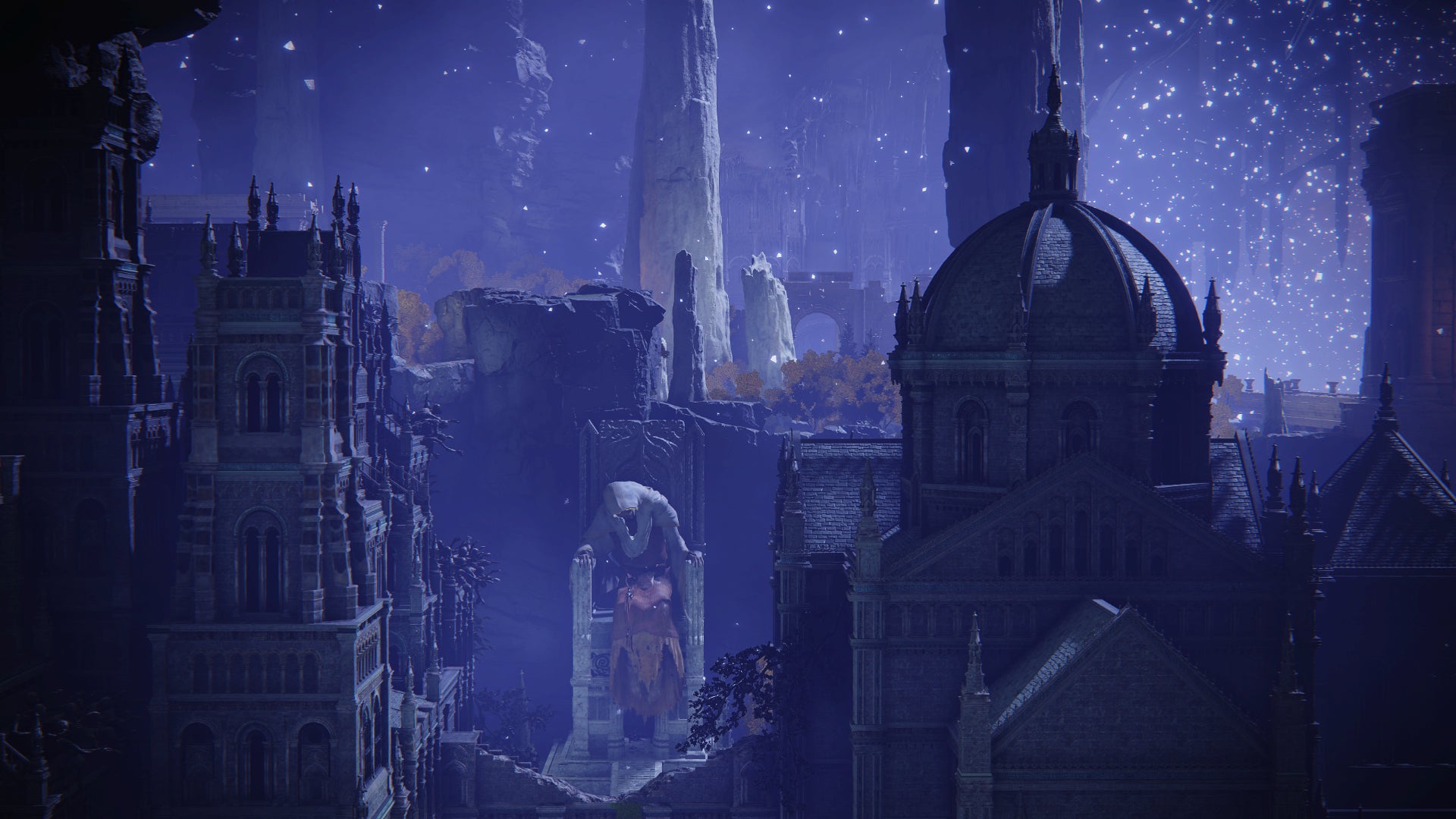Did you meet Three Fingers? Far beneath the sewers of Leyndell Royal Capital, well off the beaten track, lies what’s perhaps Elden Ring’s most haunting tableau. With Mohg dispatched, a vast underground catacomb is revealed, and – as you wade through the countless corpses within, each frozen in eternal anguish – a terrible, genocidal truth is laid bare. But all this horror is just the preamble to an even greater discovery; further down still lies Three Fingers and the revelation nothing in Elden Ring is quite what it seems. Up to this point, you’ve toiled away on your singular mission to reach a big old godly tree; all around you the aftermath of a great war – scattered factions, faded alliances, fallen heroes - and beneath all that, temporally speaking, a vast tapestry of rich history spanning millennia. But all of a sudden, with the discovery of that subterranean blasphemy beneath Leyndell, a vast cosmic conspiracy – an eternal battle for control of The Lands Between, waged by a pantheon of unfathomable beings – becomes clear. It’s a delicious lens shift, made all the more delectable because there’s a good chance you’ll get through Elden Ring without ever once contemplating its Outer Gods, oblivious to the cosmic nightmare peering provocatively from behind the curtain. The world of The Lands Between is a staggering construct, a fiercely believable place convincingly fashioned from layers upon layers of visible history – there isn’t a statue, church, or rock that doesn’t feel like it has a story to tell – but the discovery of Three Fingers and its cosmic cohorts is like the lifting of the veil, ripping reality asunder to reveal a secret history tucked between the observable truth of it all. I am, I’ll confess, a sucker for cosmic horror, and its multifaceted offspring of the existential and weird – if nothing else, the notion of personified chaos tinkering away behind the scenes has always felt like a far more convincing theological argument than most. But while literary cosmic horror has long escaped Lovecraft’s rather problematic shadow (this week’s recommended reading: B.R. Yeager’s Negative Space, Nathan Ballingrud’s Wounds, and literally anything by Thomas Ligotti), video games still, I think, struggle to represent the genre very well, either getting hung up on the mechanics of it all – insanity! – or rehashing all-too-familiar aesthetics. Honestly, I don’t think I ever need to see another tenebrous tentacle, death cult, or peculiar fishing village again. Even FromSoftware’s masterful Bloodborne – as wittily subversive as it may be, with its gothic, creature-feature feint – leans heavily on the rich iconography of Lovecraft. But Elden Ring’s secret history feels like FromSoftware shaking off those shackles for another crack at cosmic horror, this time on its own terms, and getting it wonderfully right. Elden Ring’s existential revelation isn’t front and centre, but glittering obscenely on the periphery for the perennially, perhaps dangerously, curious to find. Hints to the truth of things are, as is par for the course in a FromSoftware game, sequestered away among dozens of item descriptions, but evidence of the cosmic pantheon’s ongoing battle for The Lands Between lies everywhere, just requiring a shift in perspective to be seen. The Greater Will is, of course, unmissable as the current victor in the cosmic war, manifest as the ever-present Erdtree looming over all, but challengers are rising; there’s the insidious creep of the God of Rot, whose power has tainted Malenia and corrupted Caelid beyond salvation, and whispers abound of the Formless Mother, who is perhaps ultimately responsible for Mohg’s designs toward the ageless Miquella - a dangerous prize for a god in need of a vessel - after a chance encounter deep beneath Lyndell. Then there’s the dread Frenzied Flame of chaos – inextricably linked to the fates of the nomadic merchants, Yura, and Hyetta – and the Dark Moon, whose blaspheming worshippers were exiled to a life beneath the artificial stars of the three subterranean Eternal Cities, and who may be ready to rise again thanks to Ranni and friends. And that’s not even accounting for the lesser gods vying to be remembered: the Blood Star, channelled by the wielders of the sacrificial thorns, the one-eyed God of Fire, and more. Ultimately, it seems wonderfully fitting, given the genre From is working in here, that countless numbers of people will battle their way to the end of Elden Ring, bloodied and bruised, blissfully unaware of the cosmic chaos raging around them. And there is, of course, more than enough to admire along the way without needing to obsess over a mysterious envoy with an unexpected extra digit deep in the Lyndell sewers. But in a game whose world is shaped by stories, that its ultimate story is tucked almost imperceptibly between all other stories speaks so much to the majesty of Elden Ring.


